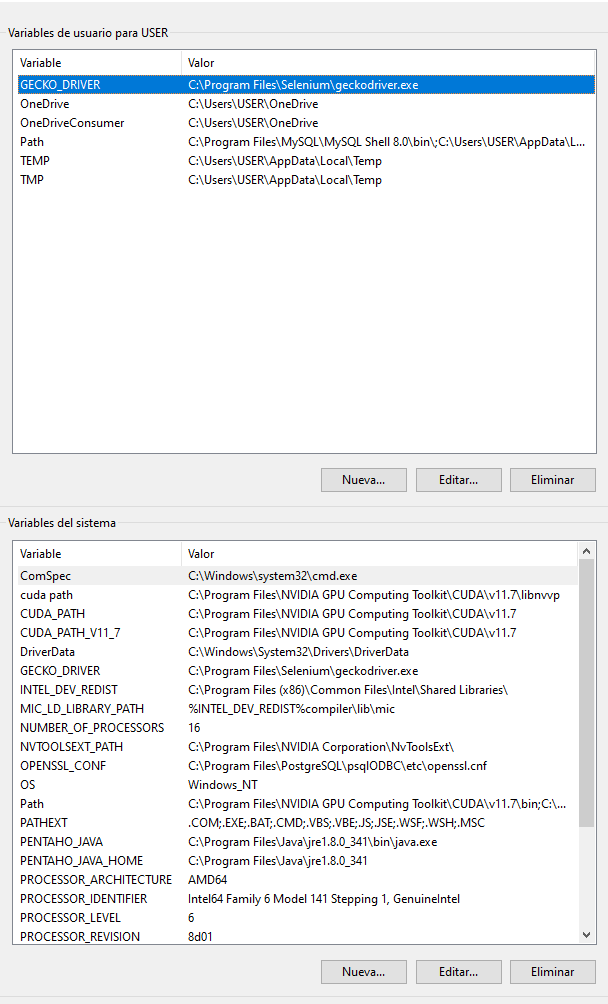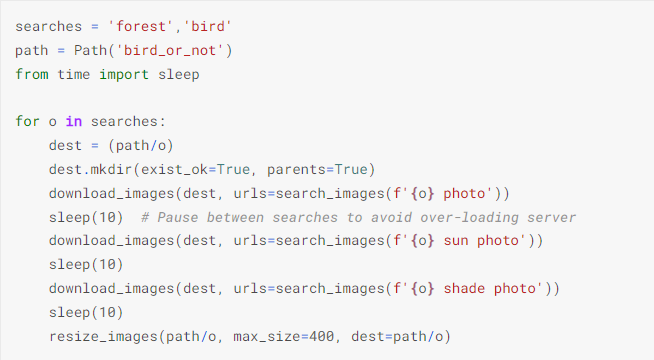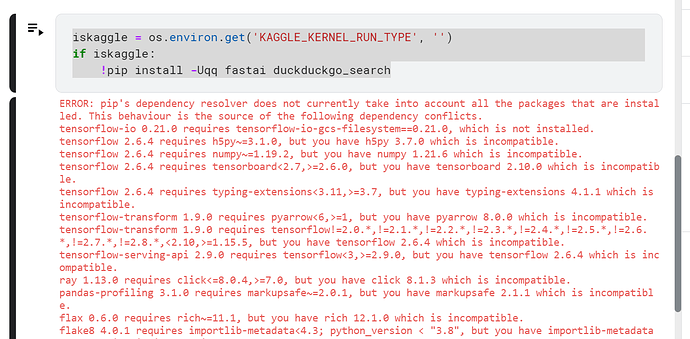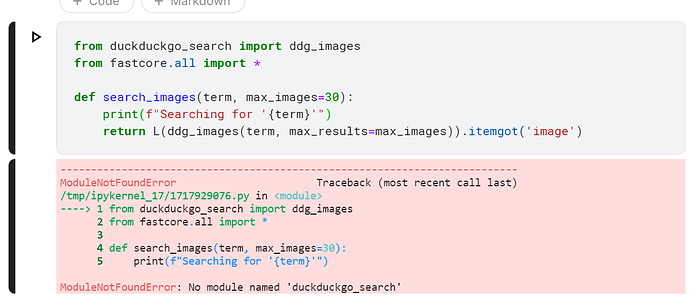Thank you @bencoman for you quick asnwer. For sure. is the first notebook from the book. I checked the dependencies, but it looks right.
The public notebook link: https://nbviewer.org/github/fastai/fastbook/blob/master/01_intro.ipynb
The full exception:
UnsupportedOperation Traceback (most recent call last)
~\AppData\Local\Temp\ipykernel_19780\1814909663.py in
2
3 path = untar_data(URLs.IMDB)
----> 4 dls = TextDataLoaders.from_folder(path)
5 dls.show(max_n=3)
6 learn = text_classifier_learner(dls, AWD_LSTM, drop_mult=0.5, metrics=accuracy)
~\anaconda3\envs\torchCudaEnv\lib\site-packages\fastai\text\data.py in from_folder(cls, path, train, valid, valid_pct, seed, vocab, text_vocab, is_lm, tok_tfm, seq_len, splitter, backwards, **kwargs)
253 if splitter is None:
254 splitter = GrandparentSplitter(train_name=train, valid_name=valid) if valid_pct is None else RandomSplitter(valid_pct, seed=seed)
→ 255 blocks = [TextBlock.from_folder(path, text_vocab, is_lm, seq_len, backwards, tok=tok_tfm)]
256 if not is_lm: blocks.append(CategoryBlock(vocab=vocab))
257 get_items = partial(get_text_files, folders=[train,valid]) if valid_pct is None else get_text_files
~\anaconda3\envs\torchCudaEnv\lib\site-packages\fastai\text\data.py in from_folder(cls, path, vocab, is_lm, seq_len, backwards, min_freq, max_vocab, **kwargs)
240 def from_folder(cls, path, vocab=None, is_lm=False, seq_len=72, backwards=False, min_freq=3, max_vocab=60000, **kwargs):
241 “Build a TextBlock from a path”
→ 242 return cls(Tokenizer.from_folder(path, **kwargs), vocab=vocab, is_lm=is_lm, seq_len=seq_len,
243 backwards=backwards, min_freq=min_freq, max_vocab=max_vocab)
244
~\anaconda3\envs\torchCudaEnv\lib\site-packages\fastai\text\core.py in from_folder(cls, path, tok, rules, **kwargs)
278 def from_folder(cls, path, tok=None, rules=None, **kwargs):
279 path = Path(path)
→ 280 if tok is None: tok = WordTokenizer()
281 output_dir = tokenize_folder(path, tok=tok, rules=rules, **kwargs)
282 res = cls(tok, counter=load_pickle(output_dir/fn_counter_pkl),
~\anaconda3\envs\torchCudaEnv\lib\site-packages\fastai\text\core.py in init(self, lang, special_toks, buf_sz)
114 “Spacy tokenizer for lang”
115 def init(self, lang=‘en’, special_toks=None, buf_sz=5000):
→ 116 import spacy
117 from spacy.symbols import ORTH
118 self.special_toks = ifnone(special_toks, defaults.text_spec_tok)
~\anaconda3\envs\torchCudaEnv\lib\site-packages\spacy_init_.py in
9
10 # These are imported as part of the API
—> 11 from thinc.api import prefer_gpu, require_gpu, require_cpu # noqa: F401
12 from thinc.api import Config
13
~\anaconda3\envs\torchCudaEnv\lib\site-packages\thinc_init_.py in
3
4 from .about import version
----> 5 from .config import registry
~\anaconda3\envs\torchCudaEnv\lib\site-packages\thinc\config.py in
11 from pydantic.main import ModelMetaclass
12 from pydantic.fields import ModelField
—> 13 from wasabi import table
14 import srsly
15 import catalogue
~\anaconda3\envs\torchCudaEnv\lib\site-packages\wasabi_init_.py in
10 from .about import version # noqa
11
—> 12 msg = Printer()
~\anaconda3\envs\torchCudaEnv\lib\site-packages\wasabi\printer.py in init(self, pretty, no_print, colors, icons, line_max, animation, animation_ascii, hide_animation, ignore_warnings, env_prefix, timestamp)
54 self.pretty = pretty and not env_no_pretty
55 self.no_print = no_print
—> 56 self.show_color = supports_ansi() and not env_log_friendly
57 self.hide_animation = hide_animation or env_log_friendly
58 self.ignore_warnings = ignore_warnings
~\anaconda3\envs\torchCudaEnv\lib\site-packages\wasabi\util.py in supports_ansi()
262 if “ANSICON” in os.environ:
263 return True
→ 264 return _windows_console_supports_ansi()
265
266 return True
~\anaconda3\envs\torchCudaEnv\lib\site-packages\wasabi\util.py in _windows_console_supports_ansi()
234 raise ctypes.WinError()
235
→ 236 console = msvcrt.get_osfhandle(sys.stdout.fileno())
237 try:
238 # Try to enable ANSI output support
~\anaconda3\envs\torchCudaEnv\lib\site-packages\ipykernel\iostream.py in fileno(self)
309 return self._original_stdstream_copy
310 else:
→ 311 raise io.UnsupportedOperation(“fileno”)
312
313 def _watch_pipe_fd(self):
UnsupportedOperation: fileno
really thank you in advance.




